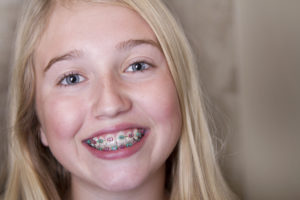 If you work in a machine shop, you’re probably familiar with tools like machine screws. It’s no secret why, either. The screw was created around 200 B.C., which means it’s one of the oldest forms of tools out there! Even though you’re probably familiar with machine screws or other custom screws, have you ever thought of these tiny tools being useful in a dentist’s office?
If you work in a machine shop, you’re probably familiar with tools like machine screws. It’s no secret why, either. The screw was created around 200 B.C., which means it’s one of the oldest forms of tools out there! Even though you’re probably familiar with machine screws or other custom screws, have you ever thought of these tiny tools being useful in a dentist’s office?
Check out our EZ Screw Builder to build your custom screw!
That’s right. The same micro screws used to hold your phone together are actually helping orthodontists create bright, straight smiles.
When a person needs braces, they have them applied because of spacing or alignment issues with their teeth. Braces can drastically change the appearance of a person’s smile over time, but we don’t often think about how they do it. Or what happens when braces simply aren’t enough. That’s when micro screws come in handy.
An orthodonsist will insert micro screws through a person’s gum and into the jaw bone to act as an anchor and help re-position teeth. In terms of dental work, these miniature screws are often referred to as temporary anchorage devices.
In order to achieve an ideal tooth alignment, the surrounding teeth must be strong enough to support a brace. Since it isn’t always possible for the teeth to be used as a support system, the micro screw will be implemented into a person’s mouth to straighten the teeth and close any potential gaps.
When someone has braces, they are able to have a micro screw placed if needed. They will be administered local anesthesia to help numb the gum, then a hole will be drilled into the jaw to insert the screw. Most people experience light pressure while the screw is being inserted into their jaw. The mini screw will then be attached to the brace either during the procedure or during a later office visit.
Screws don’t only come in the form of machine screws or mechanical devices. Screws can also be extremely tiny and be used to help fix a person’s smile. Have you heard of these types of orthodontic screws?

 If you work in a machine shop, you’re probably familiar with tools like machine screws. It’s no secret why, either. The screw was created around 200 B.C., which means it’s one of the oldest forms of tools out there! Even though you’re probably familiar with machine screws or other custom screws, have you ever thought of these tiny tools being useful in a dentist’s office?
If you work in a machine shop, you’re probably familiar with tools like machine screws. It’s no secret why, either. The screw was created around 200 B.C., which means it’s one of the oldest forms of tools out there! Even though you’re probably familiar with machine screws or other custom screws, have you ever thought of these tiny tools being useful in a dentist’s office?